Parisian Walkways: Rue Sainte-Marthe, a Thriving Corner of the 10th
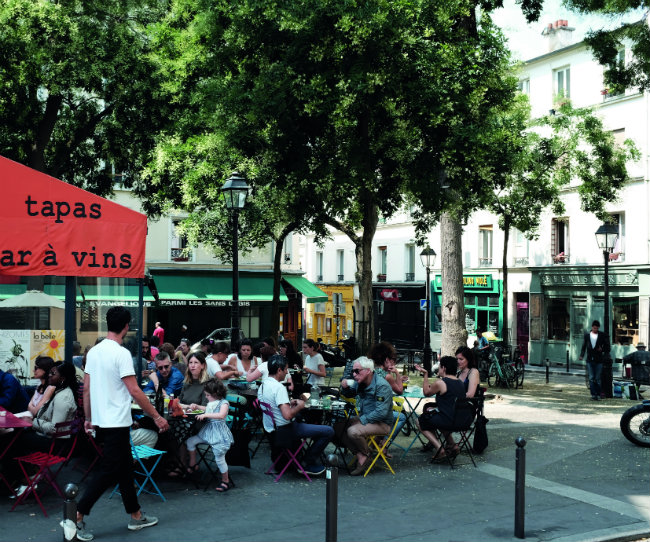
Along the main thoroughfare of a 19th-century working-class development Jeffrey T Iverson discovers a quiet corner of the 10th that is attracting a new breed of entrepreneur…
Back in 2011, the Naples-born chef Roberto Rispoli, who was then running Le Royal Monceau luxury hotel’s Michelin-starred restaurant, got word of a new importer who was taking the Paris restaurant scene by storm with some exceptional products from Sicily. His name was Cédric Casanova; and Rispoli’s colleague at the Plaza Athénée, chef Philippe Marc, was raving about Casanova’s robust, piquant olive oils, sublime sun-dried tomatoes and aromatic capers. Curious, Rispoli booked a rendezvous with Casanova at the importer’s boutique/ showroom, called La Tête dans les Olives. Soon, Rispoli found himself venturing into a slice of the 10th district he had never visited before, the part between the Canal Saint-Martin and Belleville.
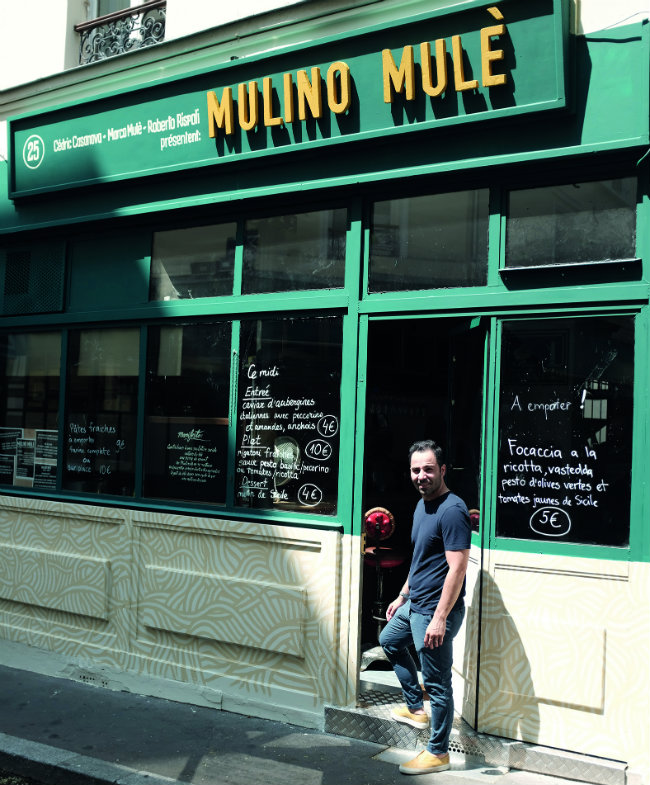
Mulino Mulè. Photo: Jeffrey T Iverson
When he finally turned onto Casanova’s street, Rispoli was taken aback by the scene: the rue was lined with 19th-century buildings dressed in a kaleidoscope of red, yellow, green and pink wooden store fronts housing artisans, artists and boutiques. Gently sloping uphill, it led to an intimate, tree-shaded plaza with restaurants and bars spilling onto terraces.
“Suddenly I felt like I was in Venice”, he recalls. “It was like I’d stumbled onto a street in Murano, where the master glassblowers all have their workshops and their façades are all painted in different shades.” Of course, Rispoli wasn’t in Venice; on the contrary, he could scarcely have stepped onto a more authentic Parisian street, albeit one slightly under the radar. He had discovered rue Sainte-Marthe, the central artery of what was one of the earliest and most enlightened working-class housing projects of the 19th century.
Rispoli was so charmed by the street, not to mention the delicacies he tasted that day at La Tête dans les Olives, that he decided to come back with his entire team from the Royal Monceau to share one of the intimate table d’hôte tasting evenings Casanova offers in his tiny boutique at 2 rue Sainte-Marthe. “It’s a fantastic street; something about all these colours just makes you smile,” he says. “Still, I never imagined that one day I’d be opening up here myself.”
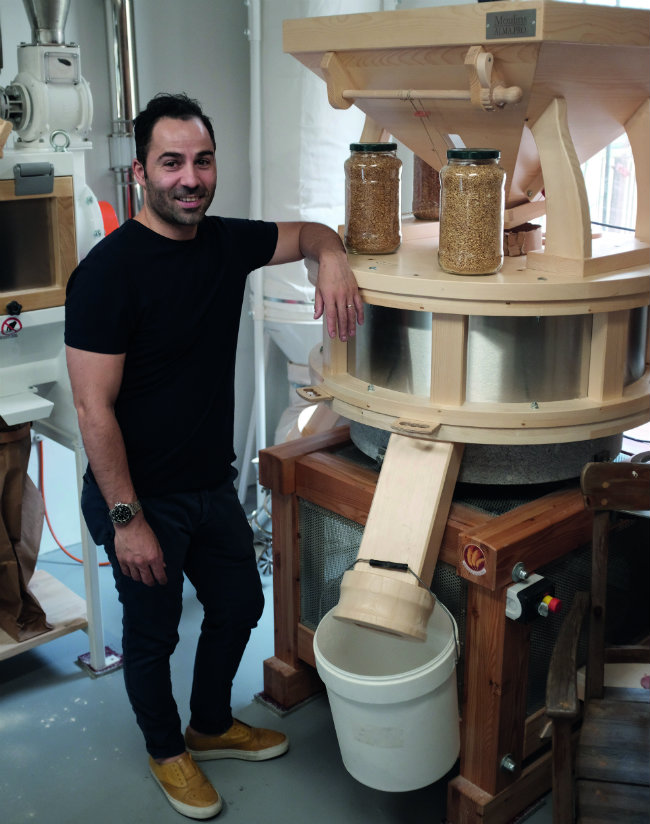
Chef Roberto Rispoli at Mulino Mulè, a working flour mill in Paris. Photo: Jeffrey T Iverson
Last autumn, at 25 rue Sainte-Marthe, chef Roberto Rispoli, importer Cédric Casanova and Sicilian farmer Marco Mulè launched Mulino Mulè – a working flour mill in the middle of Paris, producing and serving fresh whole-wheat pastas on site. It’s only the latest of many innovative, if slightly offbeat, ideas to emerge from the quartier Sainte-Marthe, a richly cosmopolitan, convivial neighbourhood that has drawn a coterie of creative and uncompromising spirits over the years. Nearly demolished more than once, the conclusion of a vast urban rehabilitation programme has today ensured the future of a historic Parisian enclave where artisans and entrepreneurs who dare to defy modern conventions have found fertile ground in which to flourish.
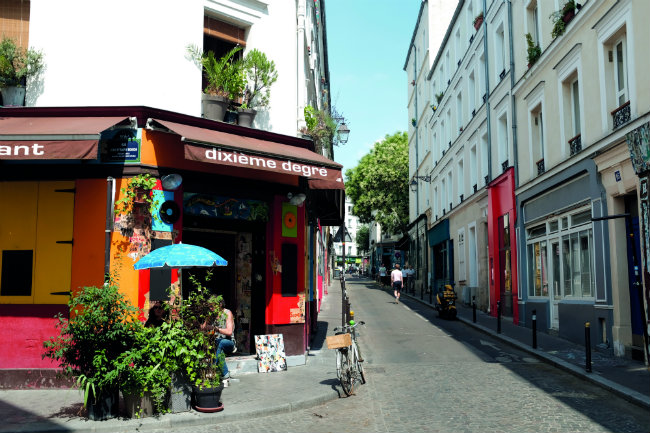
Rue Sainte-Marthe. Photo: Jeffrey T Iverson
The sign in large wooden letters above Geneviève de Divonne’s cabinet making workshop at 25 rue Sainte-Marthe is simple and direct: Ébénisterie. One might assume her creations to be equally straightforward, especially when she describes her craft thus: “I create little pieces of furniture for little Parisian apartments.” Yet her work tells another story. The elegant curves of her module-like shelves are carved from solid oak, her candle holders covered in dyed salmon leather, her tables decorated in fine straw marquetry – a rarefied art demanding phenomenal patience and a meticulous talent. De Divonne has plenty of both. She’s a consummate artisan whose work injects new life into a waning, centuries-old art form (she works with the last farmer in Burgundy to grow the variety of rye straw used for marquetry). Moreover, by choosing to take over this atelier from a retiring carpenter in 2011, she’s perpetuating a tradition of craftsmanship on rue Sainte-Marthe that has continued uninterrupted for more than 150 years.
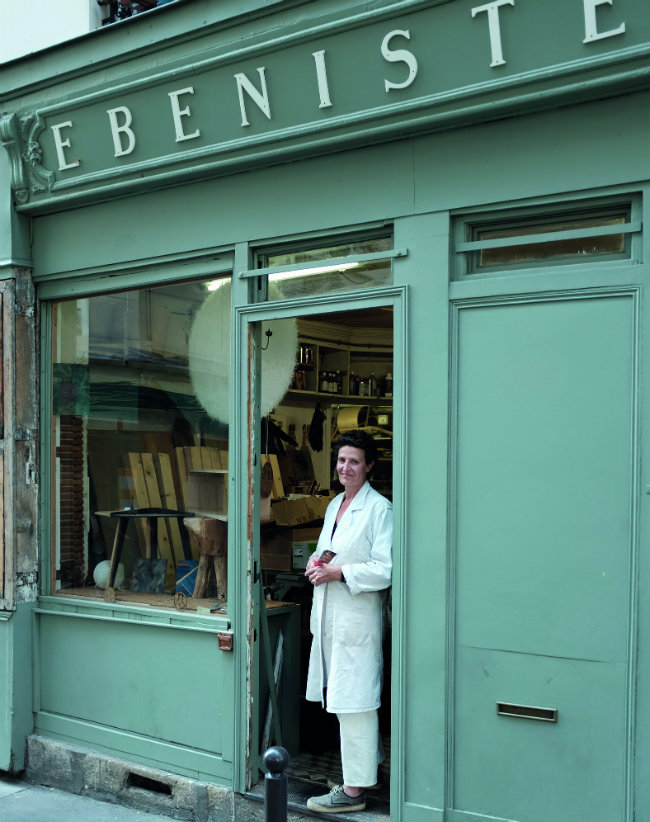
Geneviève de Divonne’s Ébénisterie, cabinet making workshop. Photo: Jeffrey T Iverson
“These buildings all date back to the period of Baron Haussmann’s great public works project which transformed Paris in the mid-19th century,” says de Divonne. She points across the street towards a handsome building of dressed stone overlooking the plaza. “We call it le château. It was the home of the Comte de Madre, a very charitable and rather avant-garde figure who wanted to house Haussmann’s workers in healthy, comfortable conditions.” Madre, a firm believer in what we would come to call Catholic social values, purchased and built buildings for that purpose around his home between 1852 and 1863, equipping them with plumbing and courtyards for kitchen gardens. The ensemble became known as the Cité du Comte de Madre, and would rival in success the Emperor’s own housing project, Cité Napoléon.
However, the decades took their toll, and by the 1980s the constructions had become so insalubrious that the neighbourhood risked being demolished. But in 2003 an uprising of local associations created to defend this heritage finally convinced authorities to undertake a €23 million, decade-long urban rehabilitation project, heralding a new era for the quartier Sainte-Marthe. And so this working-class, immigrant neighbourhood began to attract new arrivals, from artists to architects.
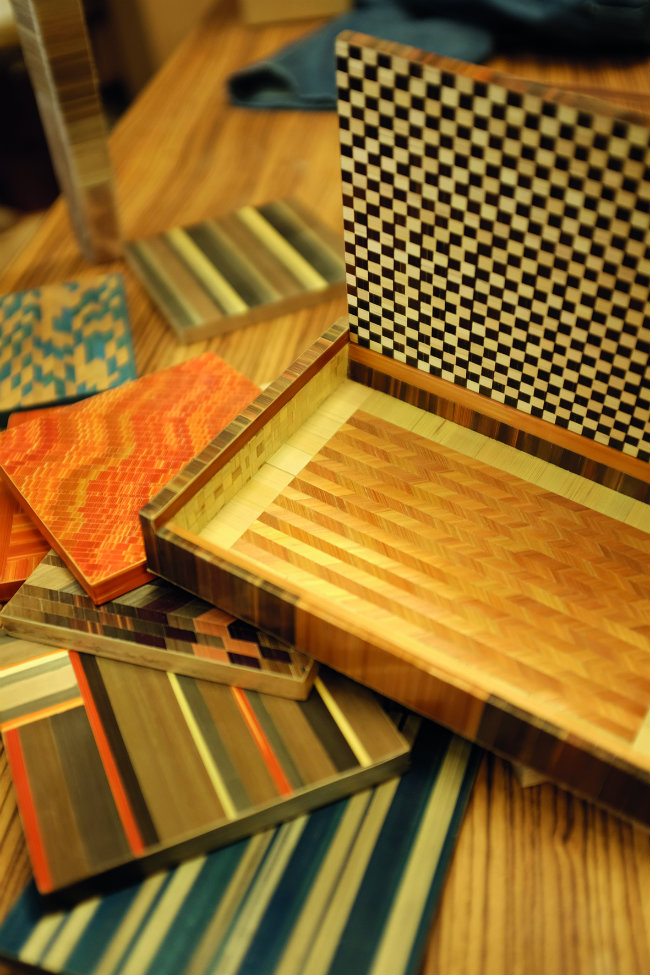
Exquisite straw marquetry at Ébénisterie Sainte-Marthe. Photo: Jeffrey T Iverson
“Bit by bit the neighbourhood has evolved,” says Hélène Vitali, a stained-glass artist who set up her workshop in 2008 on the street parallel to rue Sainte-Marthe, rue Jean et Marie Moinon. “There’s something poetic about how well this diversity of populations blends together. It makes for such a lively place and fits well with the poetry I try to express in my work.” Work which takes many forms, from collaborations with haute couture designers like John Galliano, sculpture exhibitions at museums in France and abroad, and beautiful lamps and jewellery – all done with techniques developed a millennium ago.
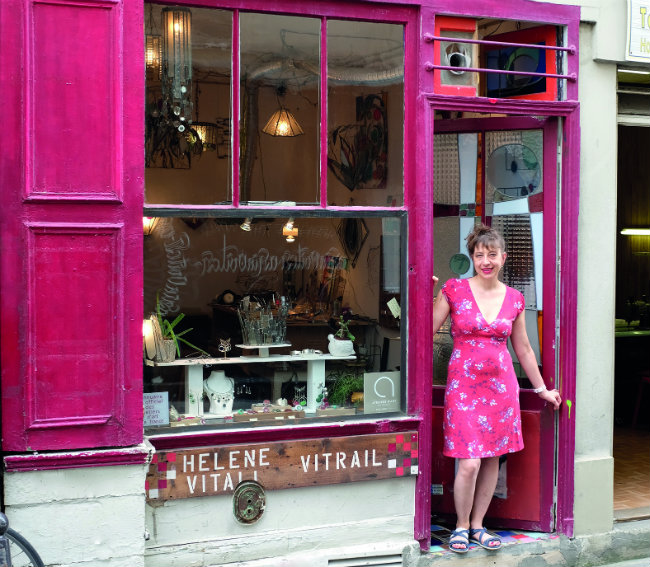
Vitrail Hélène Vitali. Photo: Jeffrey T Iverson
IDYLLIC SETTING
That determination to revitalise slightly outmoded crafts seems to be shared by all the artisans of quartier Sainte-Marthe, from cabinet maker de Divonne to Véronique Déro, an artisan book binder at 13 rue Jean et Marie Moinon, to the artisan tapissière, or upholsterer, Laura Merenda, at 5 rue Sainte-Marthe, who scorns synthetic foams, preferring natural materials like coconut straw and horse hair. “People today want to restore their family furniture with beautiful fabrics and traditional materials, to be able to pass that heritage down to another generation,” she says. It’s something she’d dreamed of doing here since she first discovered the street around 2011. “As an artisan, rue Sainte-Marthe is a place where you have room to grow. You’re surrounded by other artists and artisans who share their experience, the rents are still affordable, unlike elsewhere in Paris, and there’s this old-fashioned charm, and this human scale, to everything. So, it’s a rather idyllic setting for new artisans to launch their business.”
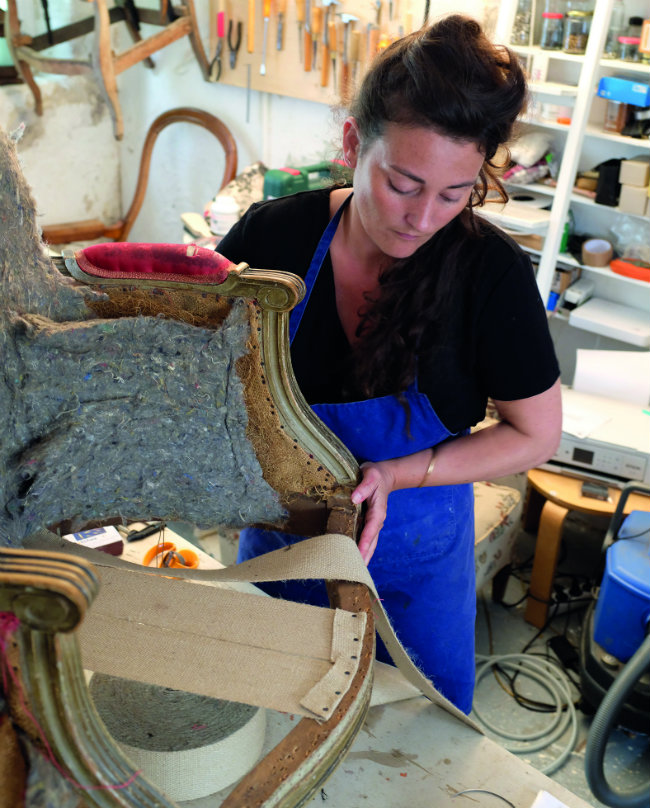
Upholsterer Laura Merenda scorns synthetic materials. Photo: Jeffrey T Iverson
Ceramics artist Sara Théron agrees. She launched Dodo Toucan next door to Laura in 2016, and this autumn moved to a bigger boutique in the 19th district to accommodate her rapidly growing clientele. “Rue Sainte-Marthe was a great springboard for my brand,” she says. “It’s so pleasant being an artisan here because by the time people enter your boutique they’re already steeped in a unique ambience; they’ve already embarked on a voyage thanks to this street.”
That transporting quality is thanks in part to the street’s manifold gastronomic offerings, including that of Luciana Santos, the Colombian-born co-founder of the vibrant vegetarian restaurant Lula at 216 rue Saint-Maur, on the corner of rue Sainte-Marthe. “I’ve always been taken with the 10th, for the cultural diversity you find here,” she says. “And the rue Sainte-Marthe has this colourful petit village quality that’s rare in Paris and has made this street a passageway for tourists and Parisians who yearn to discover l’autre Paris.” Santos isn’t the first South American to open a restaurant on rue Sainte-Marthe. Terra del Fuego at No. 4-6 is one of the best Chilean restaurants in Paris, and at No. 23 one can discover the savoury flavours of African cuisine at Jambo, the first Rwandan restaurant in Paris.
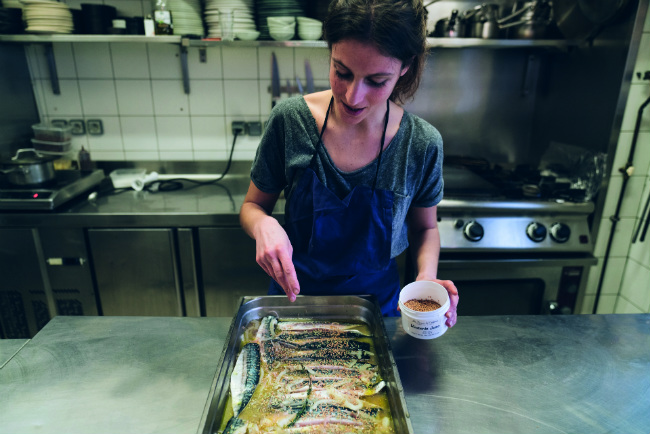
Le Galopin. Photo: Matthew Oliver
So when Cédric Casanova opened La Tête dans les Olives in 2008, Sainte-Marthe was already known for its worldly delicacies. But, following his arrival, it suddenly began to earn a reputation as a trend-setting gastronomic street, or as France’s Le Fooding guide once lauded it, the street of “la bouffe ultra” – extraordinary eating. Casanova soon opened a second table d’hôte at No. 14, Le Conservatoire, after the first became overrun. Even the late Anthony Bourdain took in a meal here for the 100th episode of his Travel Channel programme No Reservations.
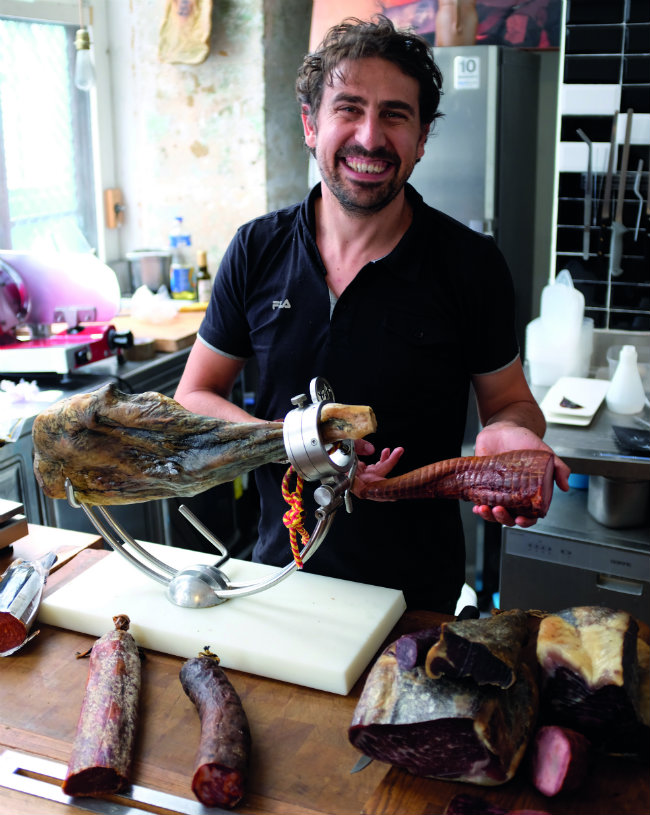
Aitana imports gourmet products from Spain. Photo: Jeffrey T Iverson
In 2011, after winning the first edition of France’s Top Chef competition, chef Romain Tischenko and his sommelier brother Maxime chose to open the laid-back yet wildly creative gastro-bistro Le Galopin at No. 34, overlooking the place Sainte-Marthe. Instant success led them to open a second address next door, La Cave à Michel, a wine bar offering tapas-style small plates prepared by Tischenko. If you’re lucky you might even get to try some of the Spanish-raised wagyu beef Tischenko confides was his secret to winning Top Chef. Otherwise, go buy some yourself. Carlos Gutierrez, founder of Aitana, which imports Spanish wagyu and phenomenal Ibérico ham among other delicacies, opened in 2011 just across the street from La Cave at No. 31. A veritable gourmet detective always on the hunt for delicious vestiges of forgotten food traditions, when Gutierrez returns to Paris with an obscure Spanish delicacy, it’s sure to soon be on the menus of the city’s top restaurants.
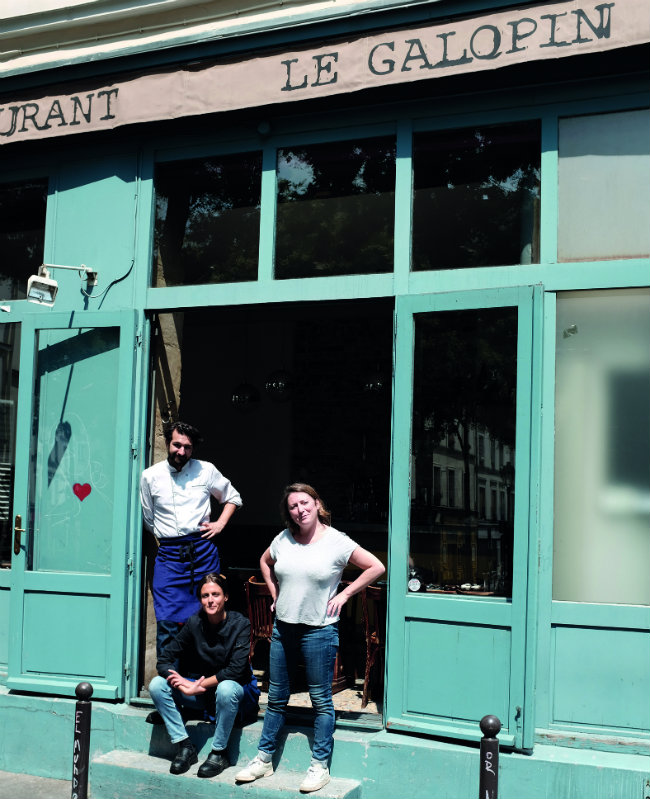
Le Galopin. Photo: Jeffrey T Iverson
Some might consider it a risky venture to open a business on a street as secluded as Sainte-Marthe, but not chef Jason Bouzy, who runs Le Galopin today. “Yes, we are completely hidden away here,” he says. “But thanks to la bistronomie movement, people know you can eat very well everywhere in Paris today. It used to be that you could only have a refined meal on the lower Right Bank, but today there are bistros in the 6th, 14th, and especially the 9th and 10th, where there’s been a bistronomie explosion. There is actually a vibrant night life on rue Sainte-Marthe now – from Le Renard, with their excellent cocktails, to La Sardine, whose terrace is the spot to be in the summer.”
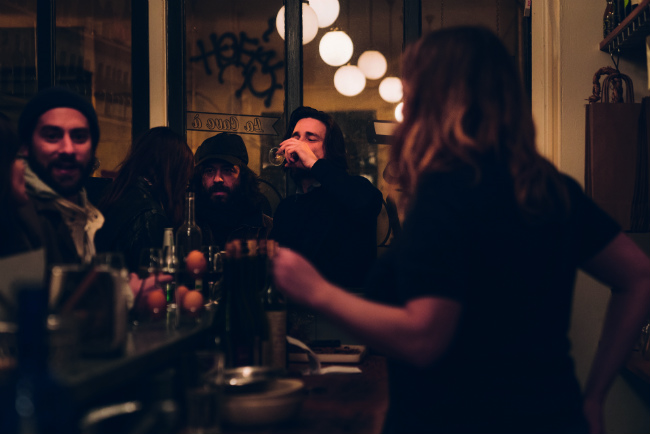
La Cave à Michel. Photo: Matthew Oliver
Though La Sardine’s terrace is delightful, it’s Mulino Mulè across the street that’s creating the most buzz. In the past couple months a stream of famous chefs, from Pierre Gagnaire to Alain Ducasse, have been sighted, and foodies line up night and day for hearty meals with whole-wheat pasta. Co-founder Roberto Rispoli is thrilled. “We’re taking these incredible, ancient wheat varieties that have been preserved in Sicily and we’re transforming them into our ourselves with our granite mill stone, right here in the 10th district of Paris. It still sounds a bit crazy when I try to explain it to other chefs,” he laughs. “There’s a freedom here you don’t find elsewhere in Paris; it’s a place where we’re able to experiment, try new recipes. It’s our laboratory and we’re excited to see what it will become.”
BOUTIQUES AND RESTAURANTS
AITANA, 31 rue Sainte-Marthe, Tel. +33 (0)6 22 47 00 27
“Exceptional meats, a diversity of charcuterie, products of the sea, and a little cheese.” Such is the motto of Aitana, importers of passionately and ethically sourced gourmet products from Spain. Loved by star French chefs, their professional showroom also offers limited public hours to give gourmets the chance to try delicacies like aged Ibérico ham and wagyu beef.
LE GALOPIN, 34 rue Sainte-Marthe, Tel. +33 (0)1 42 06 05 03
Opened in 2011 by a French Top Chef winner and his sommelier brother, this laid-back bistro offers gastronomic reworks aplenty, without a palace-restaurant bill. Dishes composed of exquisitely fresh seasonal vegetables and wild herbs, line-caught fish and choice meats, matched with thrilling natural wines, make for a tour de force of textures, flavours and unexpected pairings.
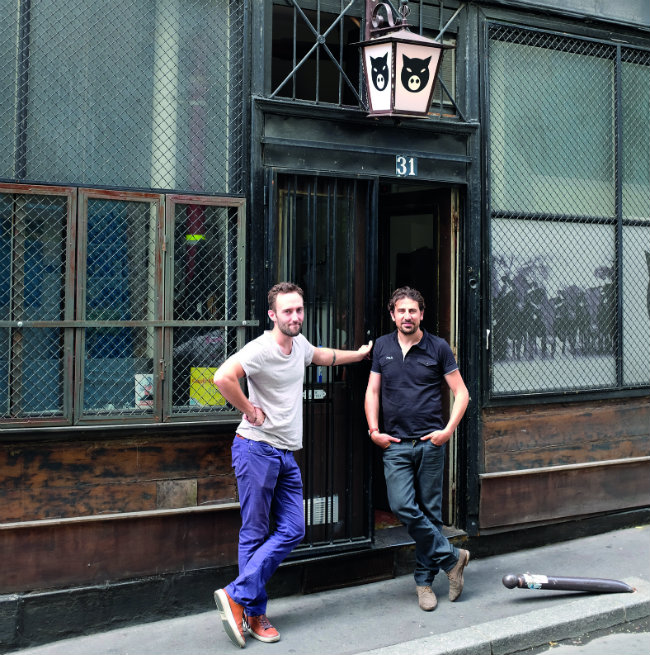
Aitana. Photo: Jeffrey T Iverson
MULINO MULÈ, 25 rue Sainte-Marthe, Tel. +33 (0)9 51 31 33 34
Operate a flour mill in the middle of Paris? This dream of fine food importer Cédric Casanova, farmer Marco Mulè and chef Roberto Rispoli came true here in 2018.With ancient wheat varieties from Sicily, Mulino Mulè creates intensely flavourful whole-wheat our for chefs and the public, and makes pasta, focaccia and other specialities to go or be served family-style on site.
VITRAIL HÉLÈNE VITALI, 28 rue Jean et Marie Moinon, Tel. +33 (0)6 30 91 35 19
Hélène Vitali once restored cathedral windows. Today, this master stained-glass artist infuses her ancient craft with modernity, collaborating with haute couture designers, exhibiting in museums and creating limited series of decorative objects at her workshop/boutique. From exquisite jewellery to lamps and sculpture, Vitali’s glasswork takes myriad poetic forms.
ÉBÉNISTERIE SAINTE-MARTHE, 25 rue Sainte-Marthe, Tel. +33 (0)6 87 58 16 02
Geneviève de Divonne is a cabinet maker of refined tastes for a clientele fed up with throwaway furniture. Using such noble materials as solid oak, iron, unusual leathers like sea snake or salmon skin, and the exquisite technique of straw marquetry, this consummate artisan creates everything from elegant tables and shelves to precious candle holders, boxes and other decorative objects.
ATELIER LAURA MERENDA, 5 rue Sainte-Marthe, Tel.+33 6 03 12 25 18
In her airy upholstery workshop, Laura Merenda practises her craft with the same materials and techniques furniture makers used centuries ago. With rigour and artistry, she restores and renovates family heirlooms and flea-market finds to last another generation. She cushions furniture with horse hair or coconut straw, and covers it with beautiful fabrics of her own design.
From France Today magazine
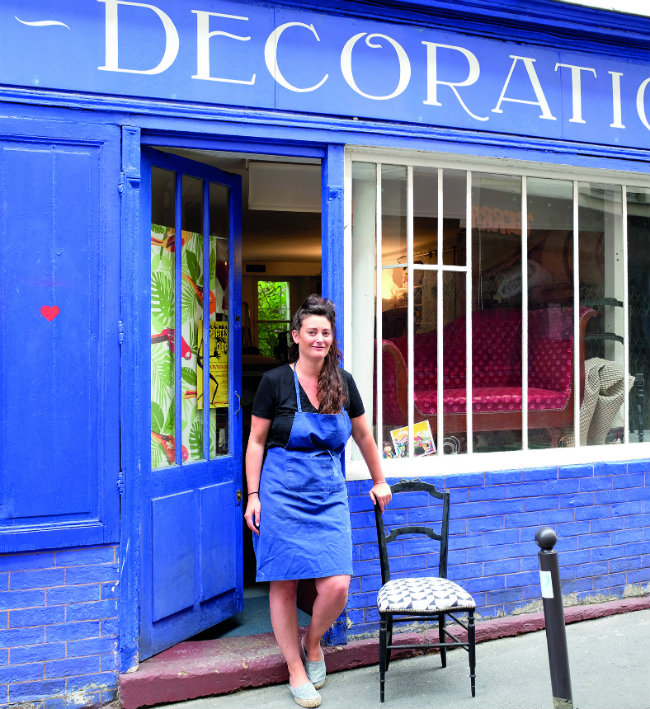
Atelier Laura Merenda. Photo: Jeffrey T Iverson
Share to: Facebook Twitter LinkedIn Email
Leave a reply
Your email address will not be published. Required fields are marked *




REPLY